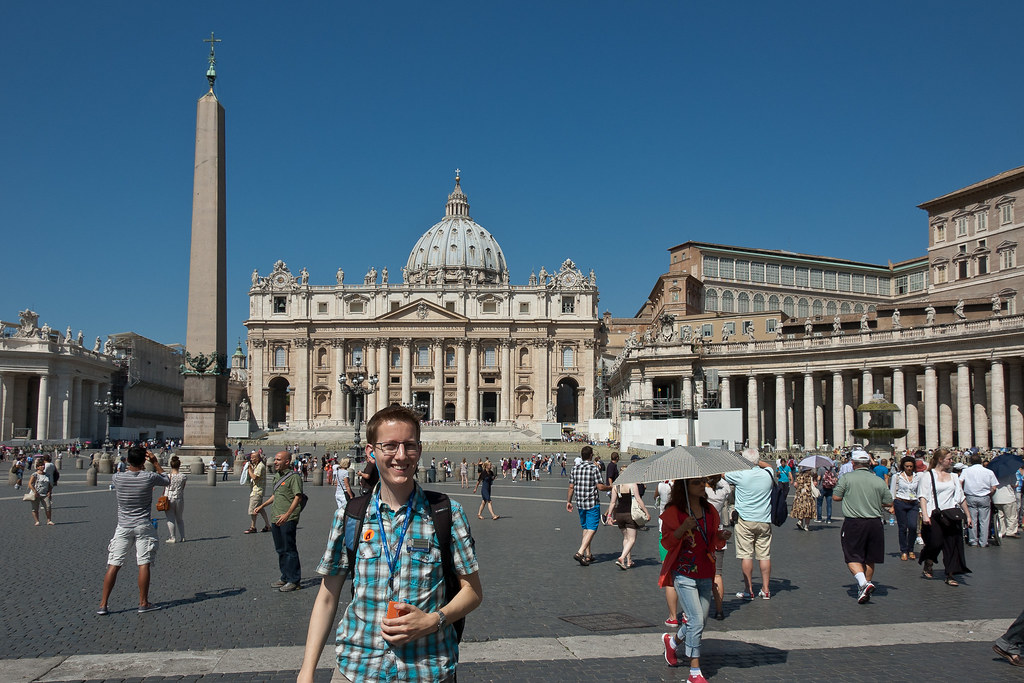
Above: Posing in Saint Peter's Square in front of Saint Peter's Basilica. The fetching headsets are worn by everyone on the tour so the guide can talk to us via microphone in the crowds.
Vatican City is a landlocked sovereign city-state whose territory consists of a walled enclave within the city of Rome, Italy. It has an area of approximately 110 acres, and a population of just over 800. This makes Vatican City the smallest independent state in the world by both area and population (the second smallest being Monaco - see one of my previous posts).

Above: A panorama of Vatican City taken from the border with Rome. The boundary is designated only with a white line and a knee-high chain fence.
The country is an ecclesiastical state, ruled by the Bishop of Rome—the Pope. It is the sovereign territory of the Holy See and the location of the Pope's residence, referred to as the Apostolic Palace which is on the right of the two pictures above.
I was lucky enough to visit Vatican City on both of my visits to Rome and take a tour of Saint Peter's Basilica. The other famous location in Vatican City is the Sistine Chapel but only a limited number of public are allowed in each day and our tour didn't include this!

Above: Looking down the nave of Saint Peter's Basilica towards the Altar.
Saint Peter's Basilica, is a Late Renaissance church designed principally by Donato Bramante, Michelangelo, Carlo Maderno and Gian Lorenzo Bernini. It is the most renowned work of Renaissance architecture and remains one of the largest churches in the world. While it is neither the mother church of the Roman Catholic Church nor the cathedral of the Bishop of Rome, Saint Peter's is regarded as one of the holiest Catholic sites.

Above: One of the decorated bronze doors at the entrance to the Basilica is the Holy Door, only opened in Holy Years.
In Roman Catholic tradition, the basilica is the burial site of its namesake Saint Peter, according to tradition, the first Bishop of Rome and therefore first in the line of the papal succession. Tradition and some historical evidence hold that Saint Peter's tomb is directly below the altar of the basilica. For this reason, many Popes have been interred at St Peter's since the Early Christian period. There has been a church on this site since the 4th century and construction of the present basilica, over the old Constantinian basilica, began on 18 April 1506 and was completed on 18 November 1626.

Above: An example of the interior's lavish design near the entrance to the basilica.
The basilica is cruciform in shape, with an elongated nave in the Latin cross form. The nave which leads to the central dome is in three bays, with piers supporting a barrel-vault, the highest of any church. The nave is framed by wide aisles which have a number of chapels off them. The central space is dominated both externally and internally by one of the largest domes in the world.
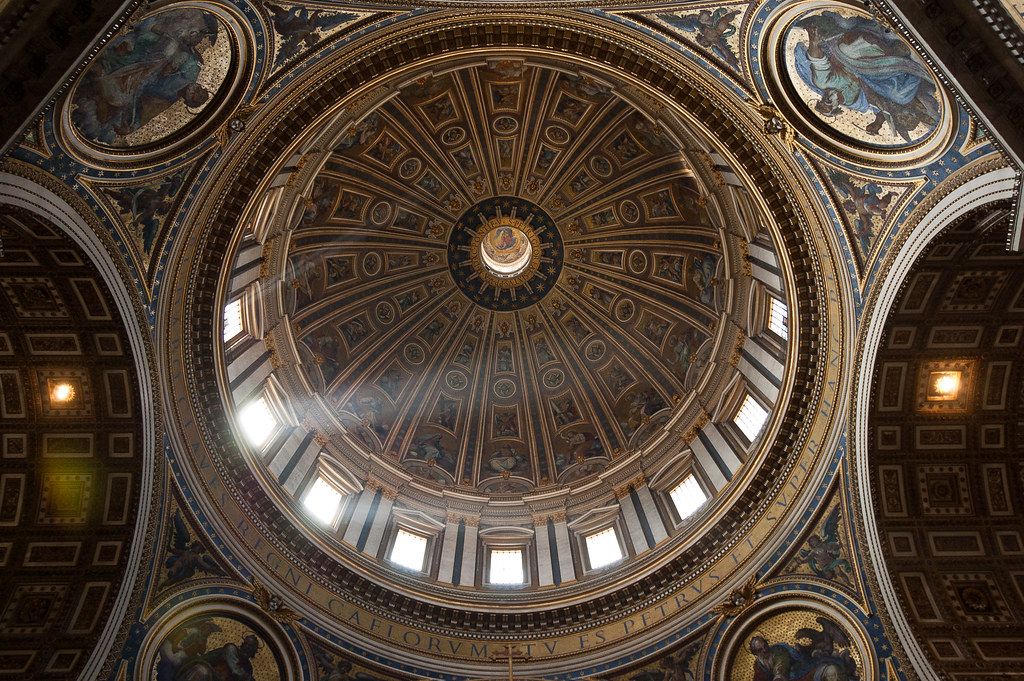
Above: Light rays through the central dome. The interior is of vast dimensions by comparison with other churches.
The entire interior of St Peter's is lavishly decorated with marble, reliefs, architectural sculpture and gilding. The basilica contains a large number of tombs of popes and other notable people, many of which are considered outstanding artworks. There are also a number of sculptures in niches and chapels, including Michelangelo's Pieta.
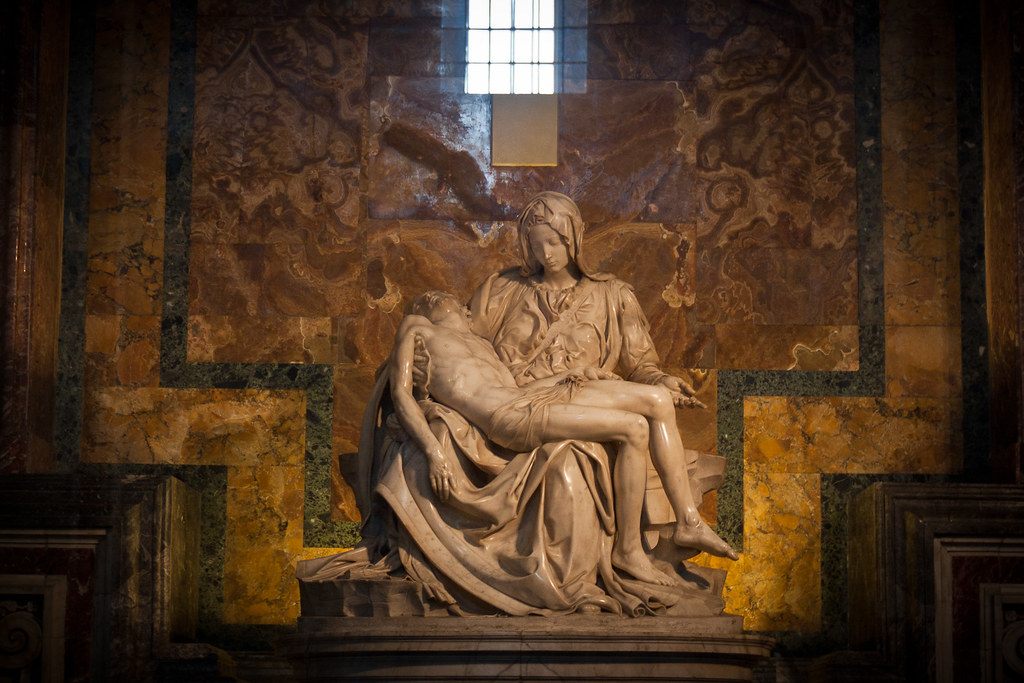
Above: Michelangelo's famous Pieta work.
The central feature is a baldachin, or canopy over the Papal Altar, designed by Gian Lorenzo Bernini. The sanctuary culminates in a sculptural ensemble, also by Bernini, and containing the symbolic Chair of St Peter.
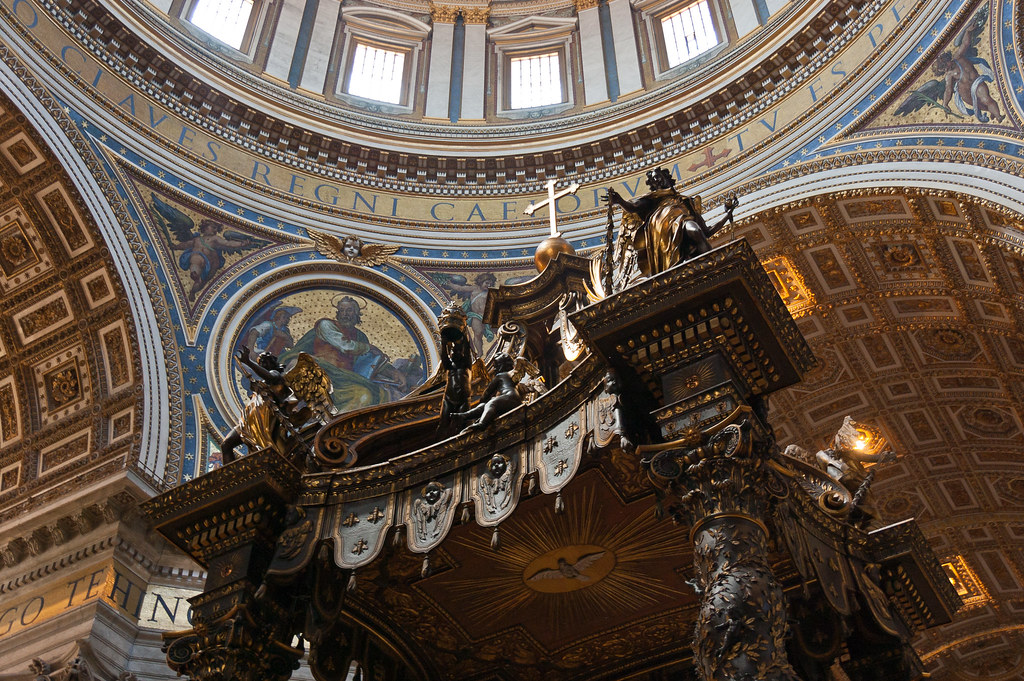
Above: Bernini's canopy which lies above the Papal Altar.
St Peter's is famous as a place of pilgrimage, for its liturgical functions. Because of its location in the Vatican, the Pope presides at a number of services throughout the year, drawing audiences of 15,000 to over 80,000 people, either within the Vatican Basilica, or in St Peter's Square. On the second day that we visited, there had been a service in St Peter's Square held by the Pope that morning!
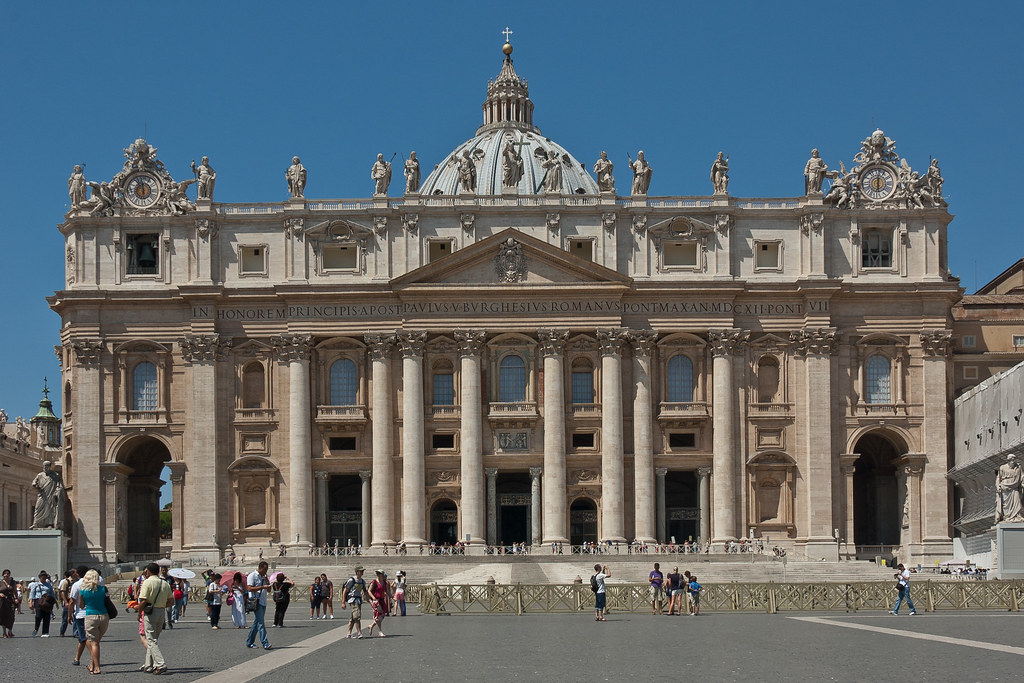
Above: The front facade of the basilica with Christ and his disciples adorning the rooftop.
The basilica is very large but it was also very crowded on both times we visited so it was sometimes difficult to reflect and take in the majesty of the place without being jostled by tourists!

Above: The statue of Saint Paul at the entrance to the basilica.
I'll finish this blog post with an interesting aside about the Pope's own bodyguards (see picture below). The Pontifical Swiss Guard was founded by Pope Julius II on 22 January 1506 and to this day, all recruits must be Catholic, unmarried males with Swiss citizenship who have completed their basic training with the Swiss Army.

Above: Members of the Pontifical Swiss Guard, guarding the basilica.
Thanks for reading and I will return with my FINAL blog post from Europe soon - Pompeii!

No comments:
Post a Comment